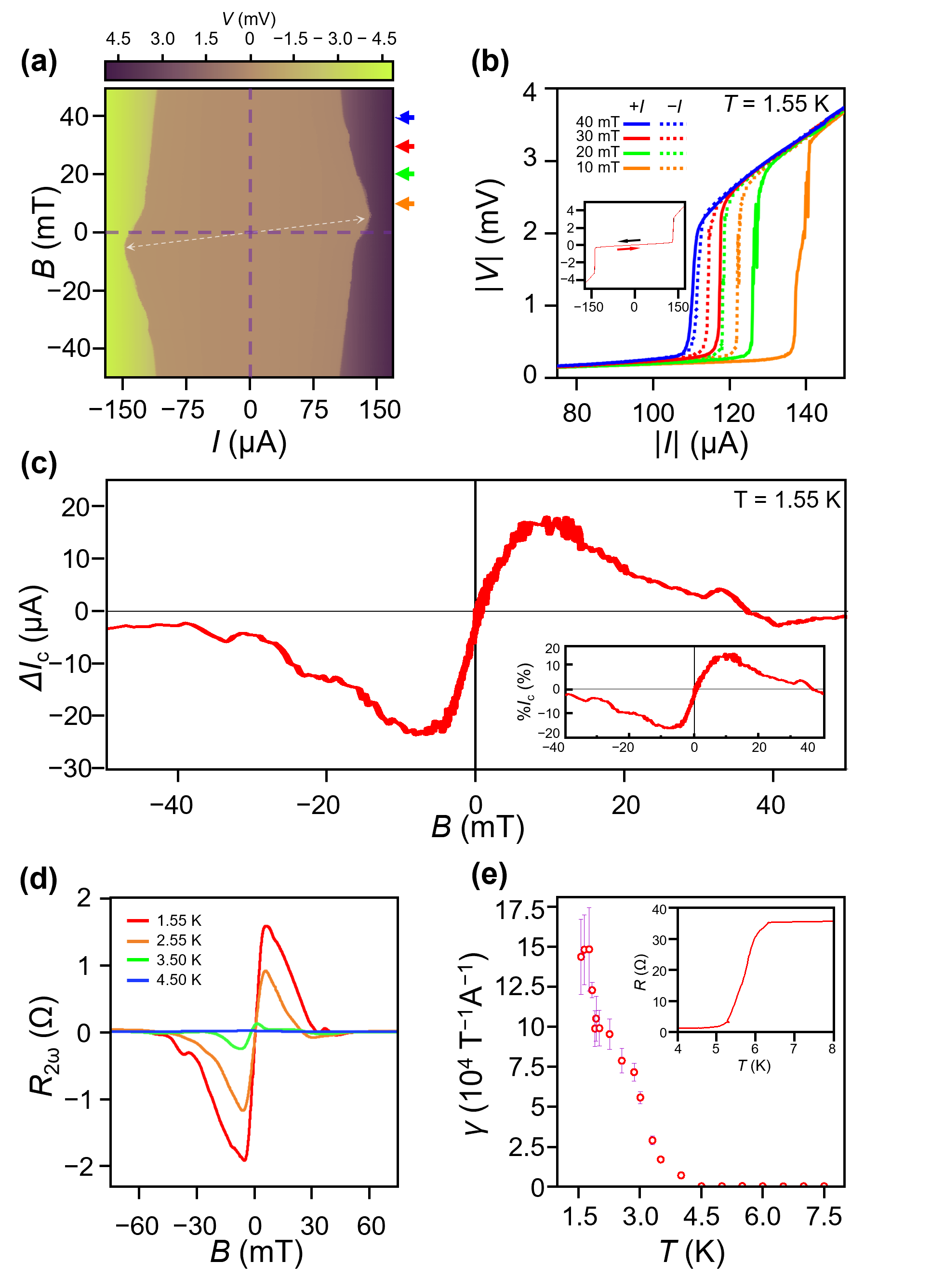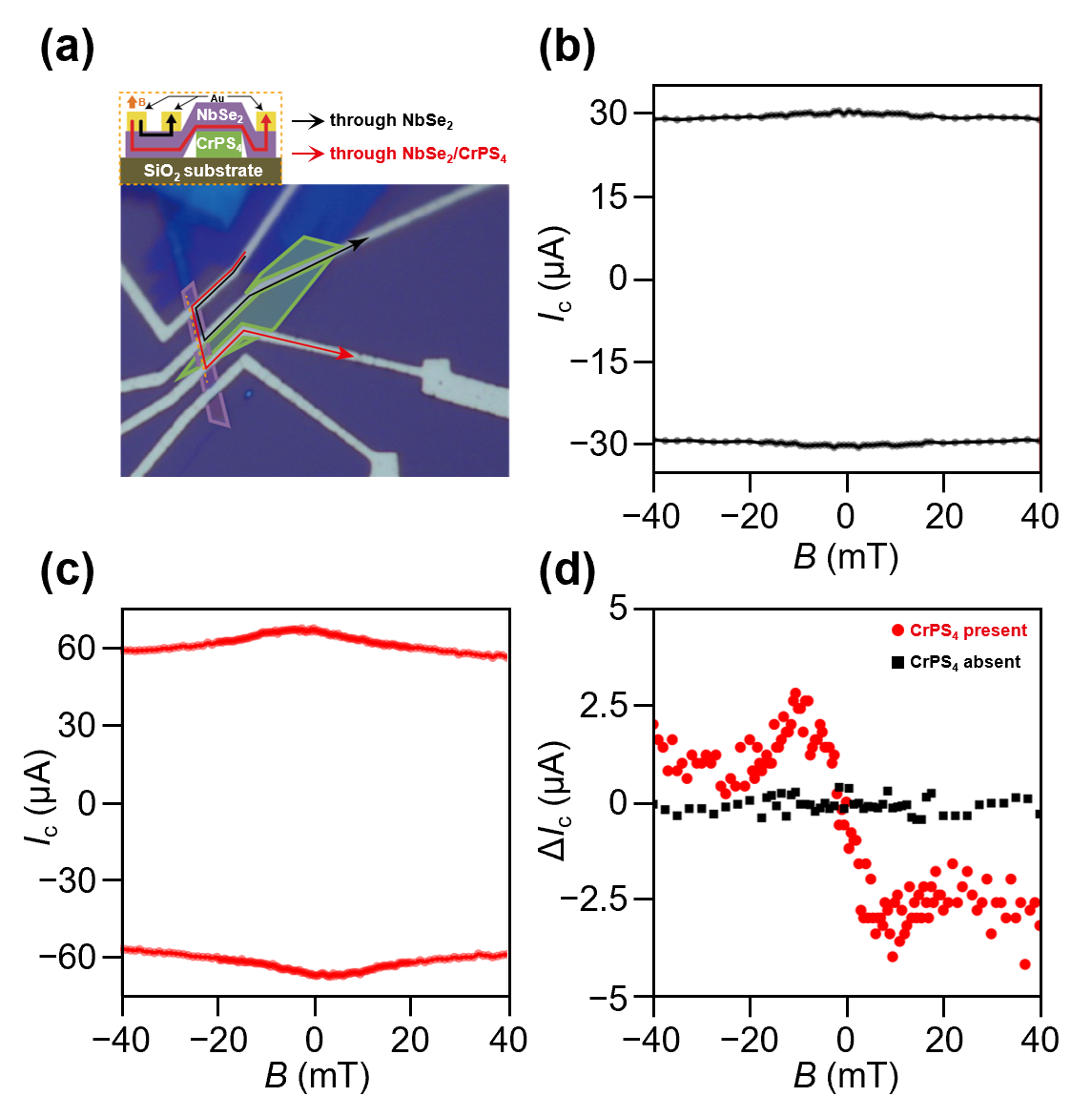Electronic Measurement of van der Waals Devices
This page contains detailed information about the electronic measurement of van der Waals heterostructure. Specifically, the van der Waals device I measured throughout this project was NbSe2, which is in close contact with CrPS4. The detailed description can be found below.
Superconducting Diode Effect in a NbSe2/CrPS4 heterostructure
In this work, we realized a superconducting diode effect in a NbSe2/CrPS4 heterostructure.
In this device, NbSe2 is exchange-coupled with a CrPS4 van der Waals layered antiferromagnetic
insulator. The NbSe2/CrPS4 bilayer device exhibits bias-dependent superconducting critical-current variations of
up to 16%, with the magnetochiral anisotropy reaching ~105 T-1A-1.
Furthermore, the CrPS4/NbSe2/CrPS4 spin-valve structure exhibits the superconducting diode effect with
critical-current variations of up to 40%.
We also utilize the magnetic proximity effect to induce switching in the superconducting state of
the spin-valve structure.
It exhibits an infinite magnetoresistance ratio depending on the field sweep direction and magnetization
configuration.
For the representative results of this project, please refer to Figure 1 and 2
and you can find details at
Phys. Rev. Research 5, L022064.

